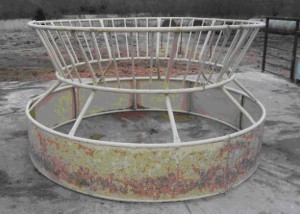– Dr. Francine Henry, Assistant Professor, Department of Animal and Dairy Sciences – Tifton Campus, University of Georgia
It is that time of the year again! As temperatures begin to drop, warm-season pastures are not so green anymore, and as we approach the Winter months, beef cattle producers scratch their heads and question marks start popping up. “Let me give a call to my county extension agent and reach out to the specialists, I have some questions about Winter Supplementation”. If this scenario does not sound familiar to you, congratulations! But if I had to guess,most of you are already there and this is actually an annual conundrum every beef cattle producer in the southeast faces.
As the “new Beef Extension Specialist in town”, I am here to help you out to identify the best strategies for your specific operation. I will start with: there is not a “one size fits all” answer when it comes to supplementation strategies and the most important thing to begin with is to not mistake supplementation for feeding. If we can assure that, a lot of dollars can be saved. Then, let’s address the term supplementation. By definition,supplementation, in nutrition terms, refers to “something added to complete a diet or make up fora deficiency”. When we consider the herd nutrition,the use of supplementation indicates that a free-choice supply of forage is available, being grazed or provided as conserved (i.e. hay or haylage). However, such forage may not necessarily contain adequate amounts of nutrients needed to meet the cowherd’s nutritional requirements during critical periods such as calving, lactation, and breeding.
Question #1: How do I know if the forage my cows are consuming does not have adequate nutrients?
If I had a penny for the number of times I heard “Oh, I know this hay I have is really good!” without an actual test report with accurate numbers on crude protein and energy values, I would be rich! So, first things first, it is very important to get . . .
Continue reading A Basic Approach to Winter Supplementation of the Beef Cow Herd






